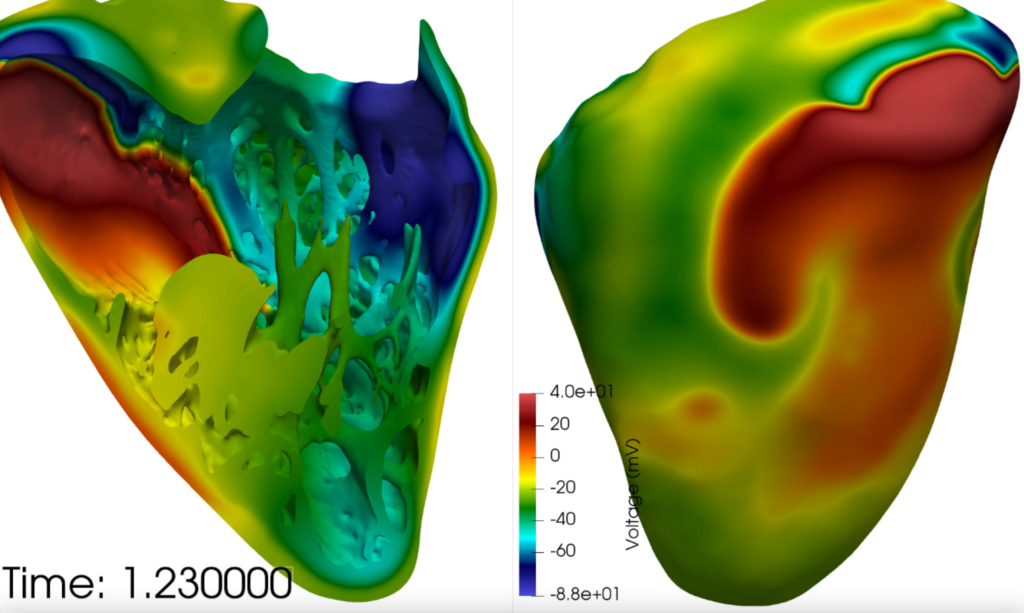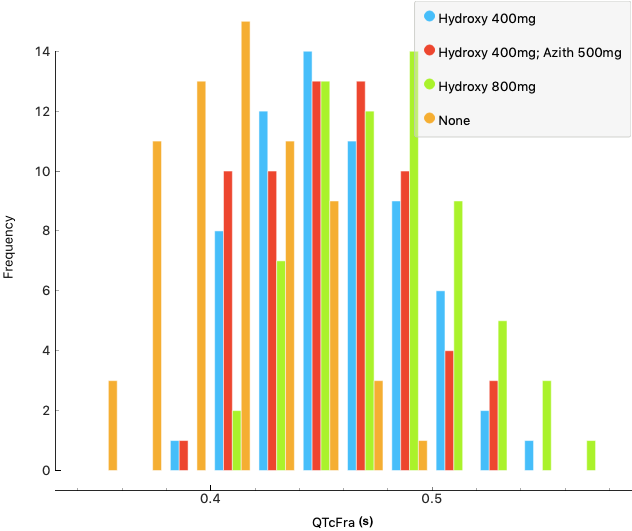In silico trials for effects of COVID-19 drugs on heart
Short description
Treatment of COVID-19 identified two potentially effective drugs, azithromycin and hydroxychloroquine, however, these were known to have proarrhythmic effects (disruption of the rhythm of the heart) especially in those with underlying heart conditions. Little was known about the effect of these drugs on the arrhythmic risk to patients who receive it as a COVID-19 therapy or the effect on the heart of using the drugs in combination.
Barcelona Supercomputing Centre (BSC) conducted research in collaboration with ELEM Biotech (ELEM) to assess the impact of the drugs on the human heart, to provide guidance for clinicians on dosages and risks. Alya Red is used in their research, a multiscale model developed by BSC which performs cardiac electro-mechanics simulations, from tissue to organ level. This type of computational modelling can provide a unique tool to develop models for the function of the heart and assess the cardiotoxicity of drugs to a high level of detail, without the need for lengthy and expensive clinical research.
The state-of-the-art models being employed and developed will also enable them to study the varied effects between groups of individuals and look at the comorbidities for such things as gender, ischemia, metabolite imbalances, and structural diseases.
Results & Achievements
Early results from the BSC/ELEM models have already identified how a conduction block may occur as an effect from action potential duration lengthening from the use of chloroquine. The arrhythmic risk was assessed during a stress test on the population (at elevated heart around 150 bpm) and with a variety of doses of the medication.
The results obtained on the human population (QTc interval duration and arrhythmic risk) were compared to clinical trials performed on COVID-19 (SARS-CoV-2) patients. An in-silico cardiac population was capable of providing remarkably similar percentages of subjects at risk, as were identified in the clinic. Furthermore, the virtual population allowed the identification of phenotypes at risk of drug-induced arrhythmias.
Objectives
- assess the impact of the drugs on a human heart population
- provide guidance for clinicians on dosages and risks
- study the varied effects between groups of individuals.
- analyse the effect of the antimalarial drugs on a range of simulated human hearts with a variety of comorbidities which may be present in an infected population.
Collaborating Institutions
Visible Heart Laboratories
University of Minnesota


